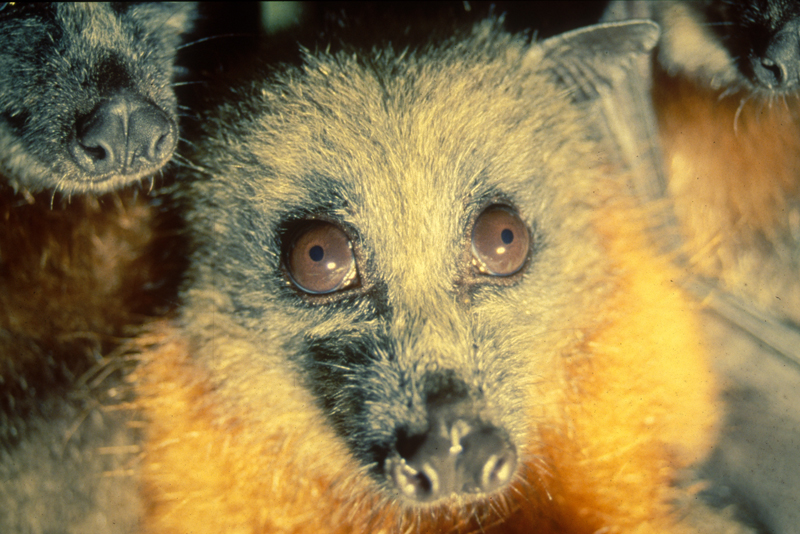Georgetown Researchers: Swift Action Needed to Avoid Large Deadly Nipah Outbreak

Posted in News Release | Tagged global health, Nipah virus, pandemic, School of Medicine
MEDIA CONTACT
Karen Teber
km463@georgetown.edu
WASHINGTON (June 5, 2018) — While the world population may know little about increasing outbreaks of the killer Nipah virus — despite the fact that one is ongoing now in India — some infectious disease experts see a potential future global health crisis.
In an article published today in the International Journal of Infectious Diseases, Georgetown researchers are calling for comprehensive actions to prepare for and thus mitigate a disaster-in-the-making so as not to allow another deadly disease outbreak like that seen in the 2014-2015 Ebola pandemic.
By June 4, the rare virus had killed all but one of the 18 people it had infected in Kerala, India. This first-ever Nipah outbreak in southern India was initially reported on May 21 and was found by May 24 to be spreading from person-to-person, according to the researchers. The original source is assumed to be infected fruit bats.
Typically, about 75 percent of infected individuals die from Nipah due to brain swelling and/or breathing difficulties.
There are no approved treatments, either vaccines, antiviral drugs or immunotherapies, although candidate agents are in the early stages of development, the researchers say. Timelines to develop all three should be greatly accelerated, according to the report, which was led by Daniel Lucey, MD, MPH, a senior scholar at the O’Neill Institute for National and Global Health Law at Georgetown Law, and Halsie Donaldson, MS, a medical student at Georgetown University School of Medicine.
But Lucey says there are immediate and practical steps that can be taken now to reduce the spread of Nipah.
“Immediate enhanced preparation measures should include training on personal protective equipment (PPE), infection prevention and control, diagnostic testing, and clinical management protocols,” he says.
Nipah viral outbreaks were first identified in humans with encephalitis (inflammation of the brain) in a 1998-1999 outbreak in Malaysia and Singapore. This viral strain was linked to pigs infected by fruit bats which then spread to humans, although rarely was transmitted from person to person. The death rate was high: 276 individual people infected, and 106 deaths.
But deadlier person-to-person transmission is now common, occurring repeatedly, in a so-called “Nipah belt” across the western part of rural Bangladesh. Outbreaks over the past 16 years in that country have been linked to human consumption of date palm sap contaminated with Nipah virus from the urine or saliva of fruit bats. Humans then spread the disease between themselves.
Now, the chances of significant spillover from the Nipah belt into both rural and urban settings is increasing, the researchers say.
“Taken together therefore, we anticipate that the risk of undetected outbreaks of Nipah in Bangladesh, and elsewhere in Asia due to either infected travelers or transmission from bats to humans, with associated person-to-person transmission, should be actively anticipated and actions taken in recognition of this threat.”
The May discovery of the disease in India is a bellwether of that potential risk of a Nipah pandemic, they add. The Nipah virus has been found in fruit bats in southern Thailand, although there has been no human transmission to date, and evidence of the virus has been detected in bats in Malaysia, Singapore and Indonesia.
And as with Ebola, Nipah virus has been reported to infect health care workers in health care facilities, including in the ongoing outbreak in India.
“Unlike before the pan-epidemics of Ebola in West Africa in 2014-2016, anticipating urban Nipah virus epidemics and also taking the comprehensive actions needed to prepare for and mitigate such epidemics is still possible in 2018 to avoid disasters like the ‘preventable tragedy of Ebola’ in West Africa,” the authors say.
There was no funding source or study sponsor for the study. The authors declare no potential conflicts of interest.
About Georgetown University Medical Center
Georgetown University Medical Center (GUMC) is an internationally recognized academic medical center with a three-part mission of research, teaching and patient care (through MedStar Health). GUMC’s mission is carried out with a strong emphasis on public service and a dedication to the Catholic, Jesuit principle of cura personalis — or “care of the whole person.” The Medical Center includes the School of Medicine and the School of Nursing & Health Studies, both nationally ranked; Georgetown Lombardi Comprehensive Cancer Center, designated as a comprehensive cancer center by the National Cancer Institute; and the Biomedical Graduate Research Organization, which accounts for the majority of externally funded research at GUMC including a Clinical and Translational Science Award from the National Institutes of Health. Connect with GUMC on Facebook (Facebook.com/GUMCUpdate) and Twitter (@gumedcenter). Connect with Georgetown University School of Medicine on Facebook (Facebook.com/somgeorgetown), Twitter (@gumedicine) and Instagram (@GeorgetownMedicine).
The O’Neill Institute for National and Global Health Law at Georgetown University is the premier center for health law, scholarship, and policy. Its mission is to contribute to a more powerful and deeper understanding of the multiple ways in which law can be used to improve the public’s health, using objective evidence as a measure. The O’Neill Institute seeks to advance scholarship, science, research, and teaching that will encourage key decision-makers in the public, private, and civil society to employ the law as a positive tool for enabling more people in the United States and throughout the world to lead healthier lives.
